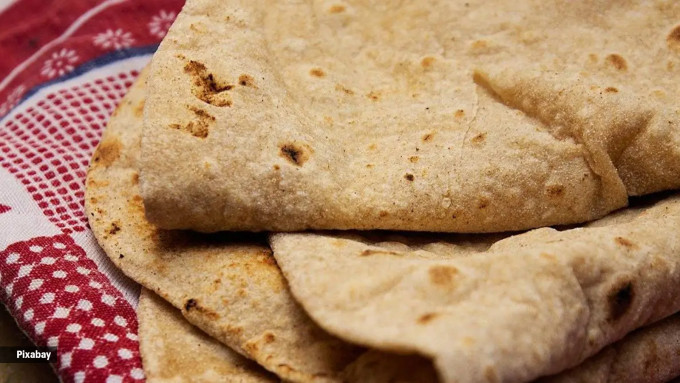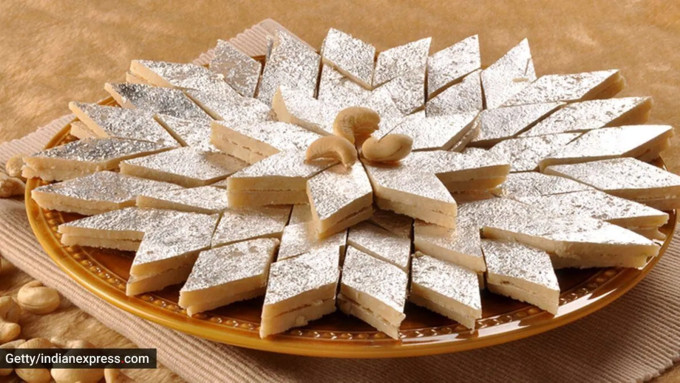Chapatis to barfis, the foods that played a role in India’s Independence movement
Come Independence Day, you’ll see numerous articles on the freedom struggle and the various aspects that contributed to the country’s liberation. However, one of the most subversive contributors to the cause — also gastronomically satisfying — is rarely mentioned: food. From chapatis to barfis, food played a pivotal role in the freedom struggle.
As early as 1857, the humble chapati kept the British on their toes. British civil servant and collector of Fatehpur, JW Sherer, in his book Daily Life During the Indian Mutiny: Personal Experiences of 1857, describes the Chapati Movement. The whole-wheat roti took on a starring role in Mathura, near Agra, when protestors began making and transporting thousands of chapatis across the country at night, often covering distances of up to 300 kilometers.

These chapatis, believed by some to carry hidden messages, were distributed by village chowkidars and local policemen. Recipients made more chapatis and sent them further, creating a widespread network of resistance. Although British investigations found no evidence of actual messages, the movement effectively mobilised people and created an atmosphere of mysterious unrest. Sherer wrote, “The objective behind the chapati movement was to create an atmosphere of mysterious restlessness, and the experiment had been very successful.”
Who would have thought that the chapati, not just a staple of healthy carbohydrates, also doubled up as a tool for Independence?
The Independence movement led to a large number of culinary creations in India. There was a point in India when you couldn’t keep the tiranga flying high, for it would upset the “masters”. With the British censoring newspapers and banning posters, freedom fighters had to find new ways to spread their message. One such innovation was the tiranga barfi——which makes an appearance every Republic and Independence Day in sweetshops in North India—created to represent the Swaraj flag, a predecessor to the Indian flag of today, by sweetmaker Raghunath Das Gupta in his small sweetshop Ram Bhandar in Varanasi.
Since there were no artificial food colours at the time, a layer of barfi made from oranges was placed alongside khoya or nariyal barfi, and pistachio-flavoured barfi was used for the green stripe. The barfi was used to commemorate the unfurling of the flag on the banks of the Ravi by Jawaharlal Nehru.
 Who would have thought that the chapati, not just a staple of healthy carbohydrates, also doubled up as a tool for Independence? (Photo: Freepik)
Who would have thought that the chapati, not just a staple of healthy carbohydrates, also doubled up as a tool for Independence? (Photo: Freepik)
Small cafes and mithai shops used to serve as meeting spots for freedom fighters. It was easy to meet fellow compatriots in these eateries while pretending to eat some food, order a mithai as a codeword, and vanish into the crowds.
Sweets named after freedom fighters became popular, such as the “Jawahar Laddoo”, a large bonbon with multicoloured dried fruits and nuts, and others like “Moti Pak” and “Gandhi Gaurav”. In towns across India, shops subtly defied censorship laws with names like Subhash Mishtanna Bhandar, which sold specialties such as Subhash Pedha or Subhash Bhog.
Then there were the sweets born of Partition – something sweet to counter the destruction of a unified land. I’ll mention just one of them – the halwa. The term ‘halwa’ comes from the Arabic ‘hulw’, meaning sweet. It originally referred to a Turkish confection of ground sesame seeds and honey, and came to India through trade routes. Karachi and Kozhikode each have their own distinct version of the halwa to this day.
The earliest known reference to halwa is in the thirteenth-century Arabic text Kitab al-Tabeekh by Muḥammad ibn al-Ḥasan Ibn al-Karīm. It describes eight varieties of halwa with recipes.
There’s a quaint anecdote attached to the Sindhi community’s Karachi halwa—a chewy halwa which looks more like a gelatinous fudge than halwa. Following the Partition, the nomenclature referring to the origins of the dessert suddenly became a bone of contention. Many renamed it “Bombay Halwa”, primarily because Bombay and Karachi had flourished as twin port cities, and most migrants from Karachi settled in Bombay. In Delhi, however, the halwa kept being referred to as Karachi Halwa and remains extremely popular as a gift item because of its long shelf life.
So every time you bite into a barfi or a chapati, you’re biting into more than just broken wheat and sugar—you are actually taking a walk through India’s historical past and Independence.
KAJU BARFI
SERVES: 8
PREPARATION TIME: 30 mins
INGREDIENTS
Cashews 1 cup, chopped
White sugar ½ cup
Water ¼ cup, room-temperature
Cardamom powder a pinch, freshly ground
Ghee 1 tsp

METHOD
*Grind the cashews to a powder.
*In a hot frying pan, add sugar with water and stir. Turn the flame to low and keep on stirring till a sugar syrup is formed. Add the ground cashews and mix well. Add the cardamom powder and continue to mix till the mixture becomes doughy. Add the ghee and stir till the ghee melts through the dough mixture. Take the pan off the stove.
*Empty the mixture on your counter or in a bowl, grease your hands with ghee, and knead until the dough is smooth. Form a ball with the dough and cover it with a slightly damp cloth. Take a baking tray, or a flat tray, and place a sheet of butter paper on it. Grease the butter paper with some ghee. Place the dough on the baking sheet and use a rolling pin to spread the dough flat. Keep the thickness to ¼ of an inch. Let this set in the fridge for an hour.0
*With a sharp knife, cut the dough into diamond shapes. Sprinkle some dried fruits, or varq, before serving.
Next week, I will write about East Bengali/Bangladeshi cuisine and the differences and similarities with West Bengali cuisine.
📣 For more lifestyle news, click here to join our WhatsApp Channel and also follow us on Instagram
Disclaimer: The copyright of this article belongs to the original author. Reposting this article is solely for the purpose of information dissemination and does not constitute any investment advice. If there is any infringement, please contact us immediately. We will make corrections or deletions as necessary. Thank you.

